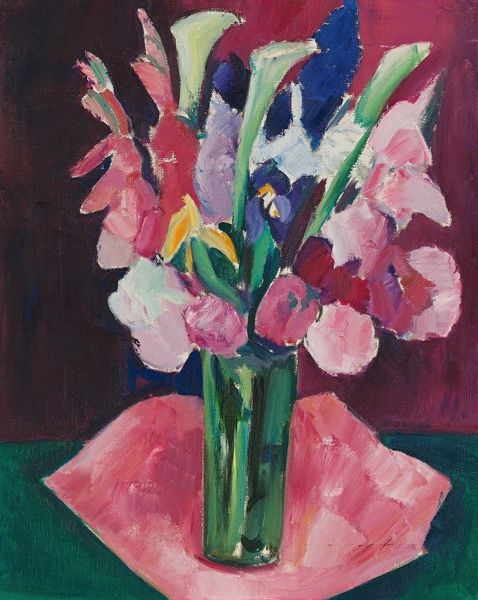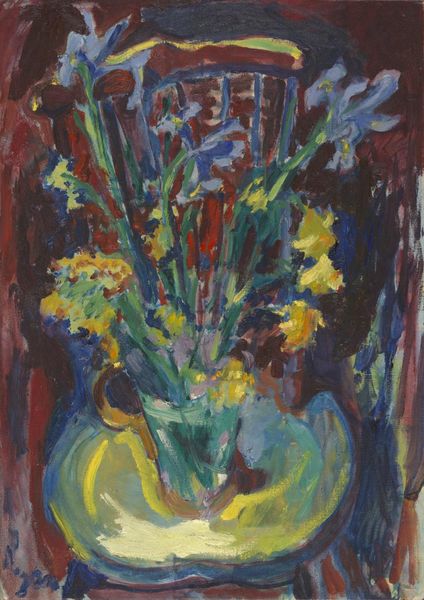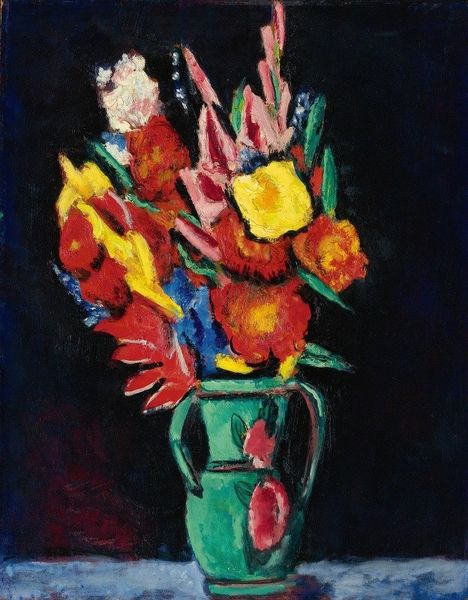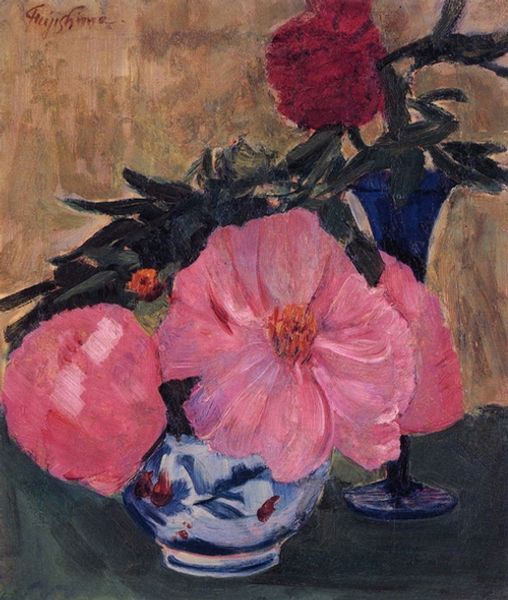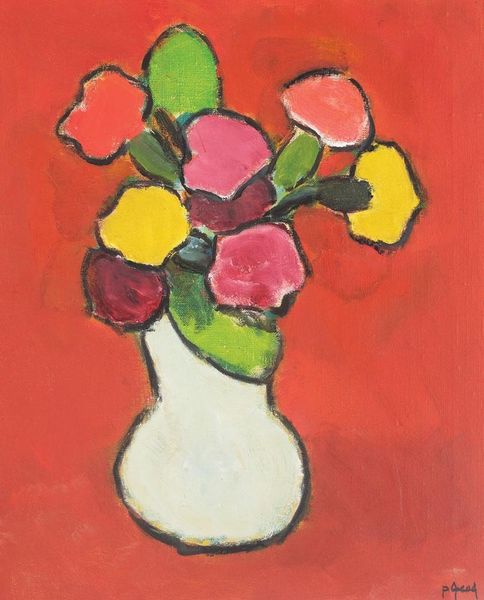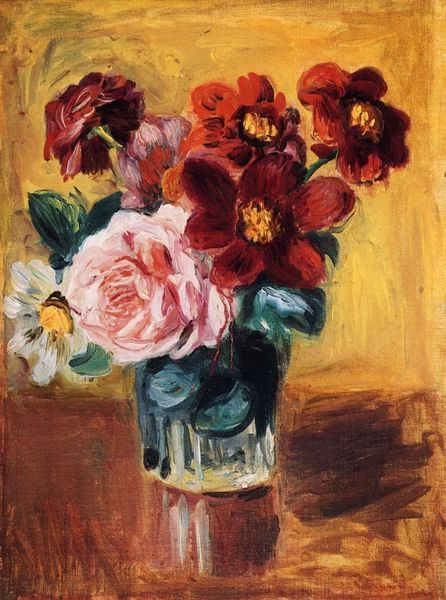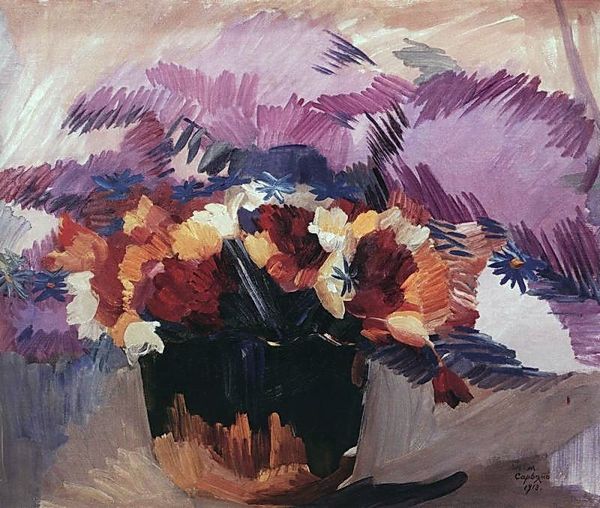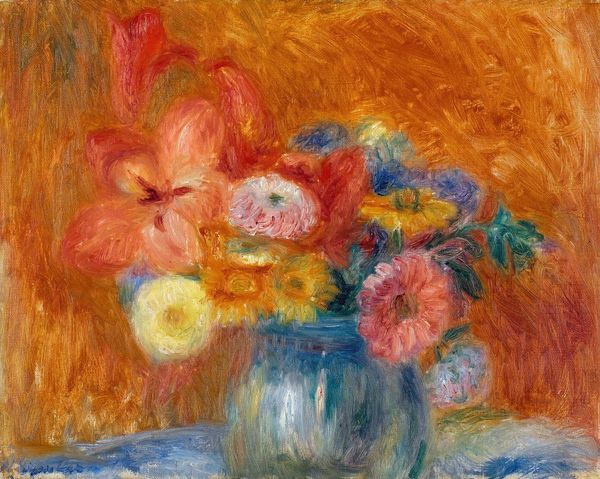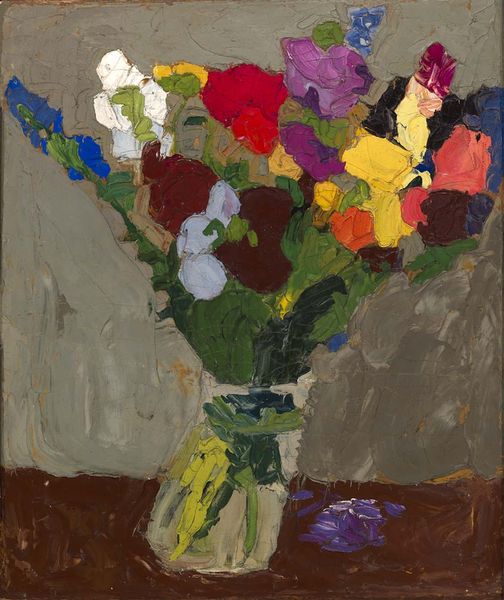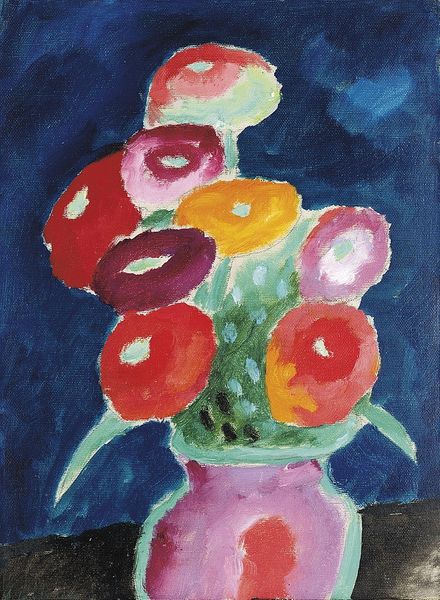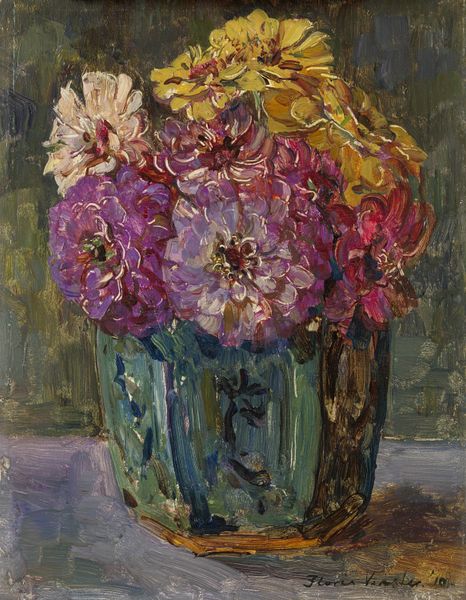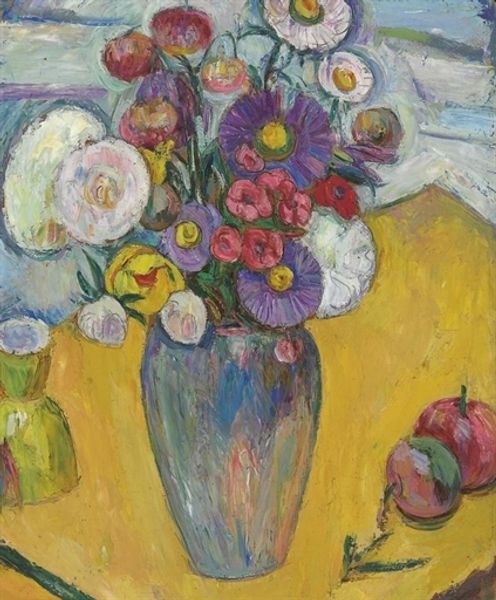
oil-paint, impasto
#
portrait
#
fauvism
#
fauvism
#
oil-paint
#
landscape
#
figuration
#
impasto
Dimensions: 50 x 45 cm
Copyright: Public domain
Curator: The aggressive application of paint in this piece immediately catches my eye; there is a certain urgency in the rendering, almost as though the artist were capturing a fleeting vision. Editor: Indeed. I see what you mean; it has an incredible dynamism for such a contained still life! Here we have Koloman Moser's "Hyacinths," from 1910, crafted with oil paint in a strikingly bold, impasto style. Curator: Knowing that Moser was a leading figure in the Wiener Werkstätte, a progressive arts and crafts movement, helps to understand the aesthetic approach at play here. There was a drive for functional integration of beauty in society, and that translated to this direct, unadorned representation. Editor: Absolutely, I see this reflected in the color choices. Pink for the hyacinths; a brooding, ultramarine background; a vibrant juxtaposition of red, blue, and yellow. One might call these colors celebratory or optimistic, almost defiant! Looking at this vibrant display, the hyacinth bulbs themselves evoke feelings of fertility and renewal, promising the upcoming arrival of Spring. Curator: Interesting, especially in light of Vienna at the time, dealing with shifts in social structure and anxiety toward cultural heritage during the fin de siècle. The emphasis on vibrancy could then read as an assertive embrace of modernity through vivid aesthetics. Did these floral compositions provide Moser, and his viewership, an alternative lens through which to express joy, perhaps free from the social trappings imposed during that era? Editor: I agree, and let’s remember hyacinths often symbolized playfulness and a touch of pride in the language of flowers. In the broader picture, Fauvism celebrated individual expression and emotion liberated from traditional approaches to pictorial space. This could explain Moser adopting impasto painting as a method of representing sensory responses without adherence to precise detail. Curator: It speaks volumes to the institutional frameworks supporting art. When one compares the stylistic features of his prior work, it seems Koloman fully immersed himself into artistic expressions freely and independently through exhibitions such as the Hagenbund—which further cemented the validity and reception of artwork within Viennese high society. Editor: These insights bring "Hyacinths" to life in a much richer way. The emotional, visual language creates more than simply pretty decor, becoming an act of social optimism and hope. Curator: It appears a seemingly decorative work on the surface then turns into one which displays powerful social context after looking deeper into it.
Comments
No comments
Be the first to comment and join the conversation on the ultimate creative platform.

